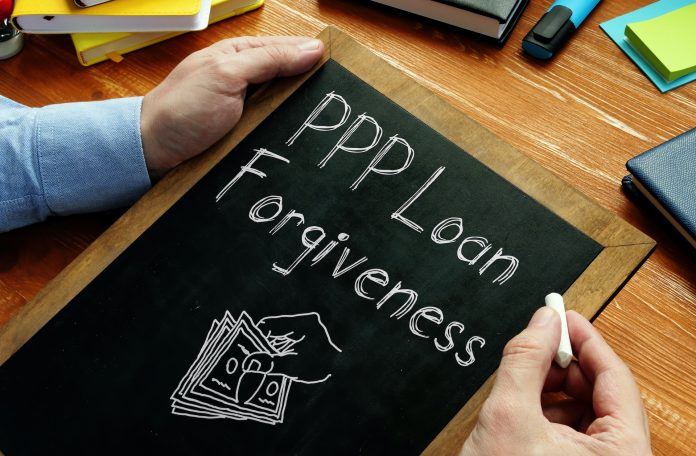Key Highlights
- House passed Paycheck Protection Program Flexibility Act in effort to ease restrictions on original PPP Program
- This House bill comes immediately after the new Treasury Department “Interim Final Rules” on PPP loans
- There is good news and bad news attached to these efforts
The original Paycheck Protection Plan passed and signed into law in late April under the sweeping+$2.1T CARES Act intended to provide a life jacket to small businesses drowning from the COVID-19 pandemic now. Now the original PPP has an addendum bill attached to it that addresses concerns of small business owners.
Download Your FREE Ultimate Agent Survival Guide Now. This is the exact ‘do this now’ info you need. Learn NOW How to Access All The Bailout Program Cash You Deserve. Including Unemployment and Mortgage Forbearance Plans. To Access the Ultimate Agent Survival Guide Now Text The Word SURVIVAL to 47372. 4 Msgs/Month. Reply STOP to cancel, HELP for help. Msg&data rates may apply. Terms & privacy: slkt.io/JWQt
Called the Paycheck Protection Program Flexibility Act, let’slook at the good news first:
- At the top of the good news list is that this new bill reduces the amount of the loan that needs to be spent on payroll from 75% to 60%.
- Now, small businesses can spend 40%, rather than 25%, of the loan, instead of the original 25%, on rent, mortgage payments, utilities and interest on loans.
- The new plan now extends the time frame that businesses can use these loans from 8 weeks to 24 weeks. This is a very big deal.
- Small business owners would now be able to rehire their workers by December 31, 2020, an extension from the original June 30 deadline.
- Business owners would now have more leeway on loan forgiveness to show they could not rehire their workers or reopen their businesses due to safety standards.
- Small business recipients would now have more time to repay the loan they received from the PPP.
- The small businesses that get loan forgiveness would be able to defer their payroll taxes.
Of course, the US Senate would have to also pass this bill for it to move forward for presidential signature but most experts agree there is some hope for a compromise bill here. The problem is timing…when will a compromise bill reach the President’s desk and then…would the President sign such a compromise bill? People and businesses need money now.
If and when all of that happens, this new “Flexibility” bill would be constrained by new Department of Treasury regulations that dictate how the PPP loan forgiveness process actually works.
According to Forbes, some of the regulatory problems include…
- The small business owner would likely need an attorney and/or an accountant to figure out the forgivable portion of the PPP loan as the government did not concern itself with the administrative time required to decipher the inherent rules.
- The new rules would likely leave many small business owners in debt and many banks holding short-term 1% interest loans. The original intent of the PPP was to NOT have small business owners incur more debt and to NOT have banks holding short-term interest loans.
- Unlike the original PPP bill, the new regulations now give the SBA review authority on the eligibility and accurate calculations made by the small businesses regarding the loan amounts and forgiveness of those loans. The key factor is that the SBA could decide that the small business had access to other credit or other funds.
- The loan forgiveness process could now take up to 5 months once the small business files a forgiveness application with their bank. The bank gets 60 days for review and then the SBA gets 90 days to review and then approve the bank’s decision. The SBA could determine that any portion of the loan as ineligible for forgiveness though borrowers do have a right to appeal. Importantly, borrowers must now keep all files and paperwork on PPP loans for 6 years.
- The borrower is responsible for its forgiveness calculation AND is responsible to provide any necessary documentation to support that amount.
- The Treasury Department regulation DID NOT CHANGE the rehire date from June 30. EVERYTHING about an employee being rehired or rejecting an offer to be rehired MUST be documented in writing for forgiveness.
- Loan forgiveness is definitely tied to maintaining the same number of full time employees as when owners calculated the initial loan amount AND owners maintaining the same wages per employee. Any amount of wages reduced more than 25% will not be forgiven.
- Owner employee and self-employed payroll forgiveness is capped at $15,385/month. This arbitrary cap leaves a difference of about $5,000.
Obviously, the more simple and seamless the PPP forgiveness process, the better for our overall economy and the small business community…but, no. That is not what’s happening here.
Thanks to FORBES.
Also read: New Unemployment Claims Below 2M for First Time in 11 Weeks, Senate Nears $370B Deal for Small Business Loan Programs, Back to Business Everyone – Real Estate Firms Moving Forward























